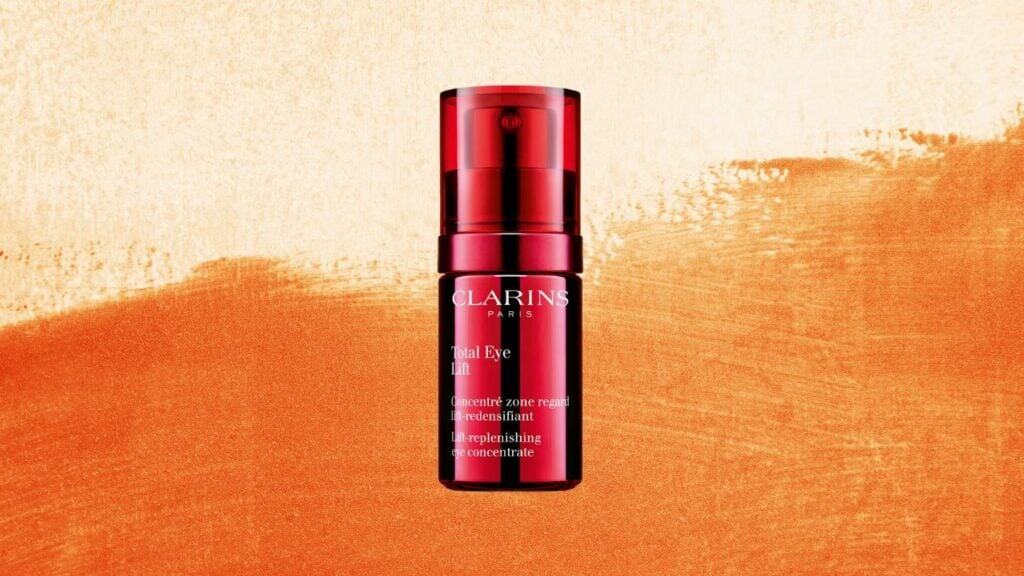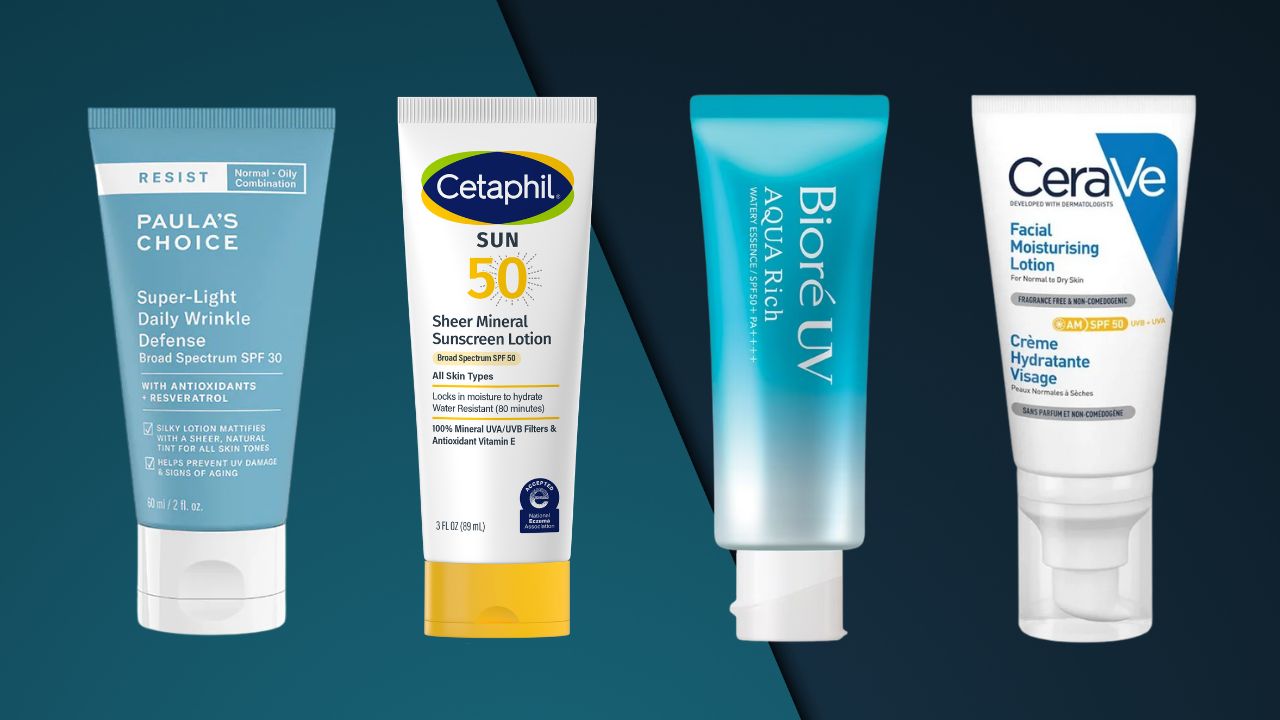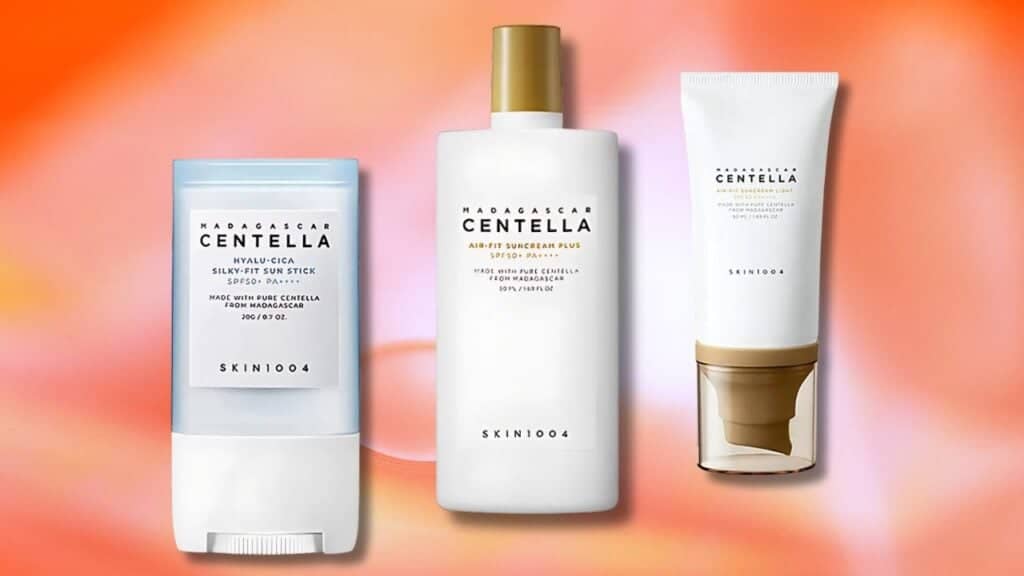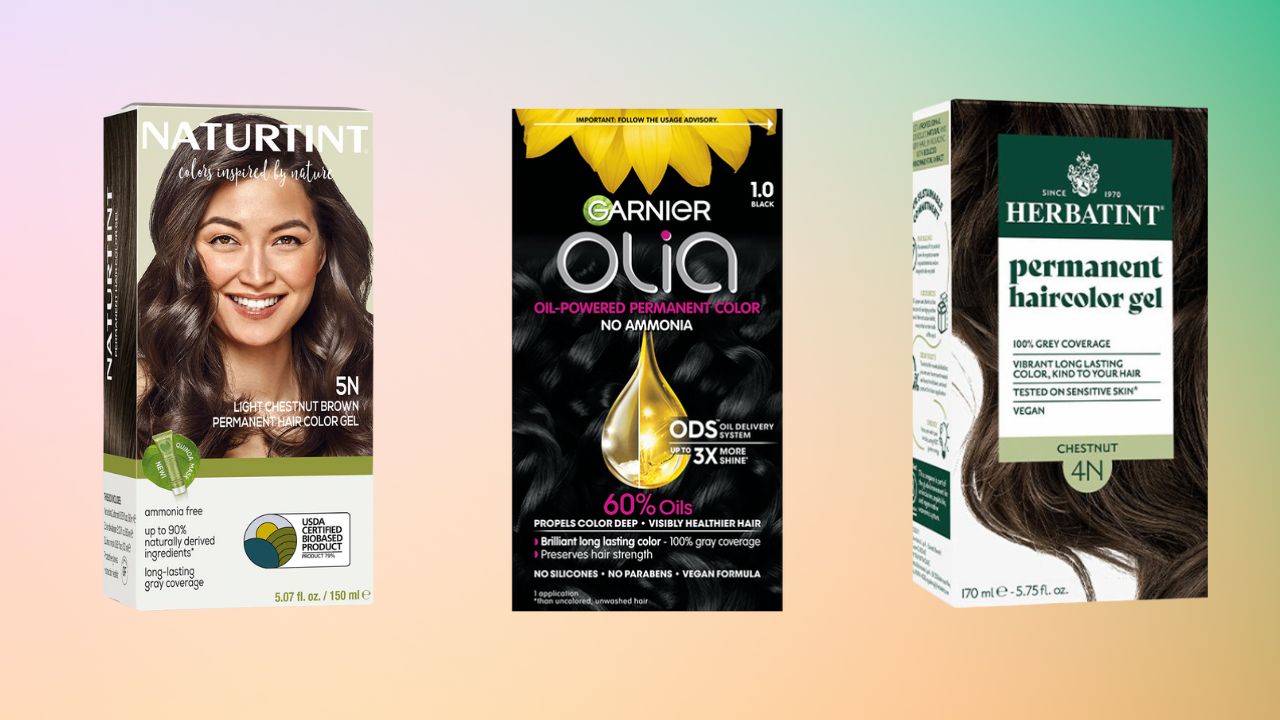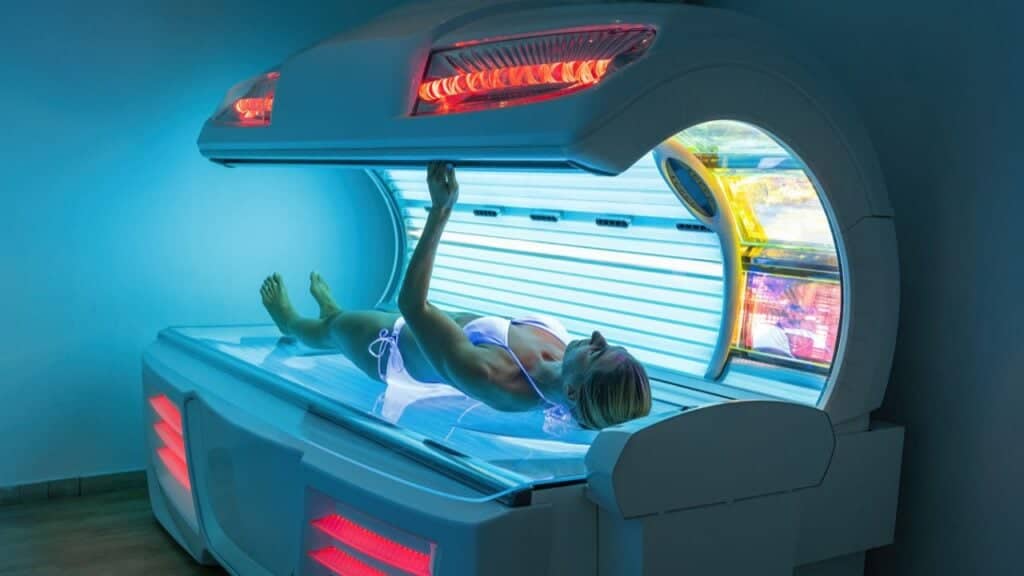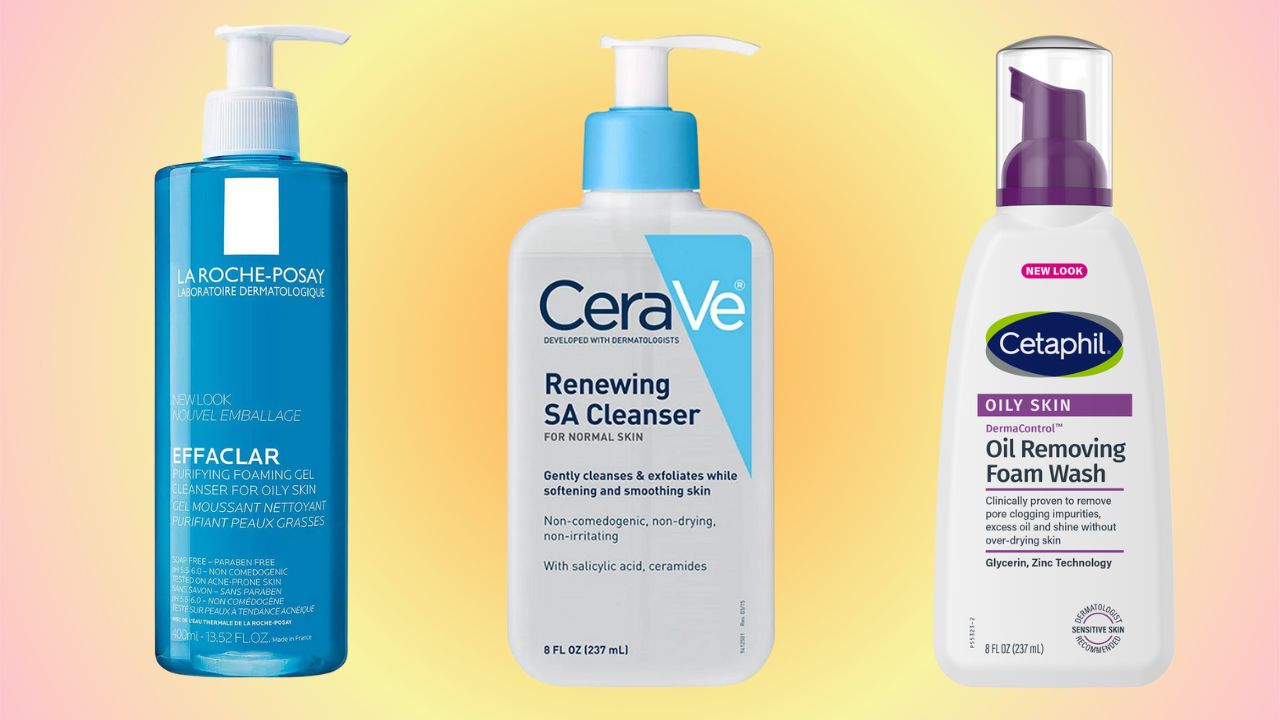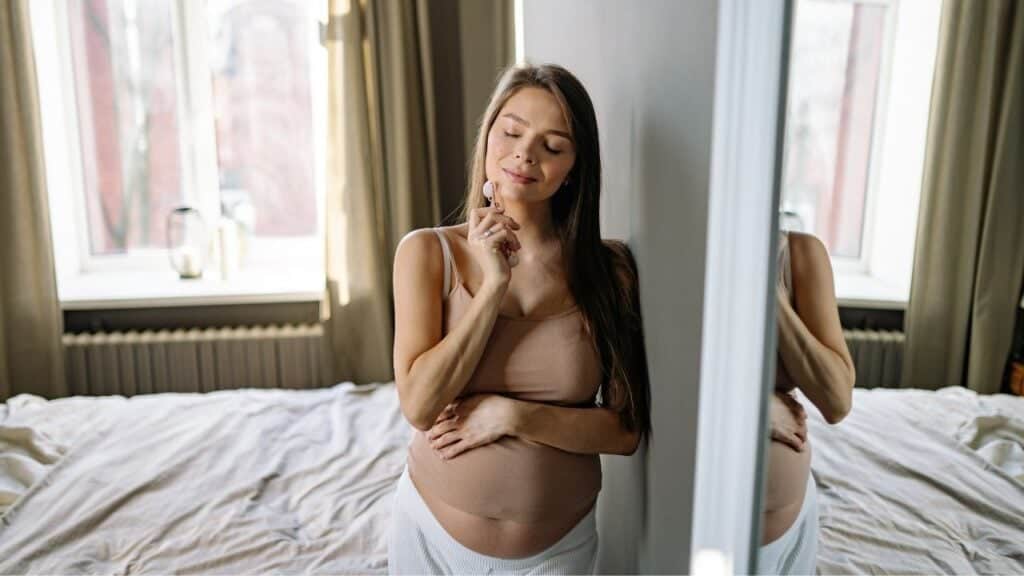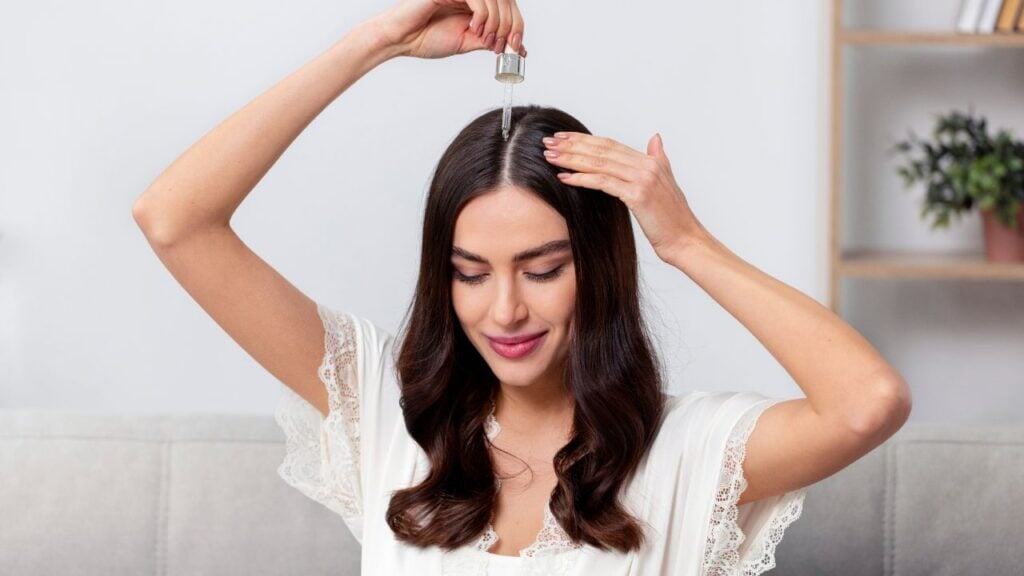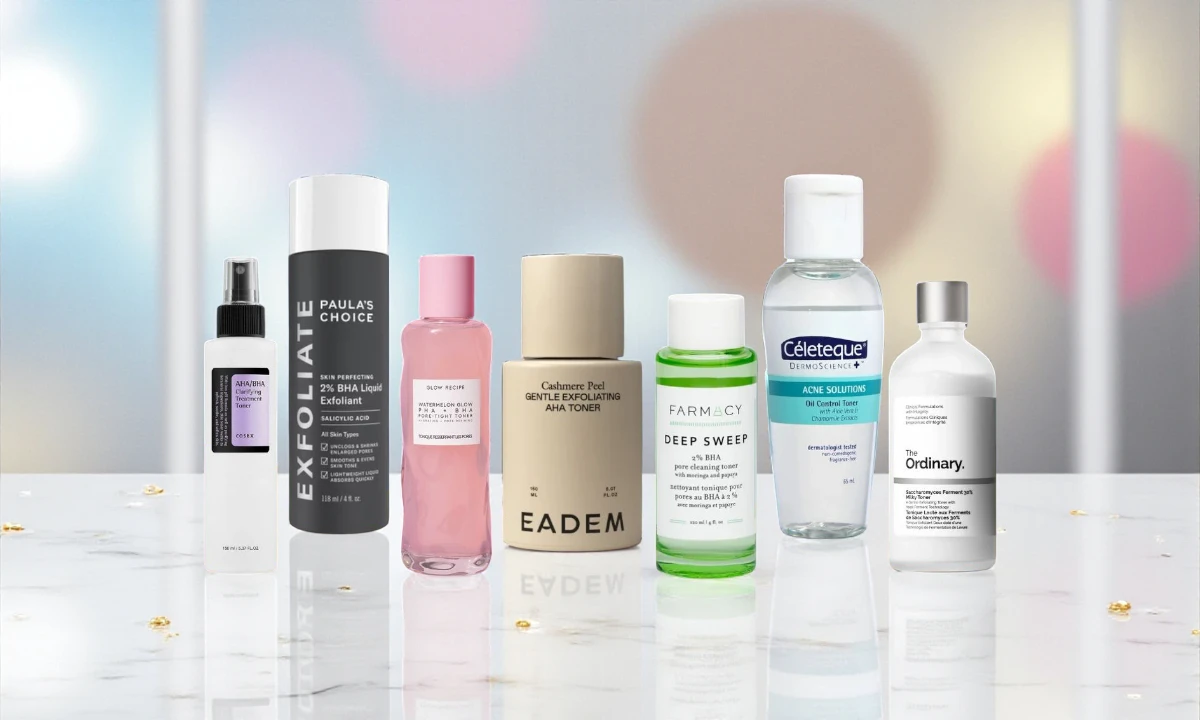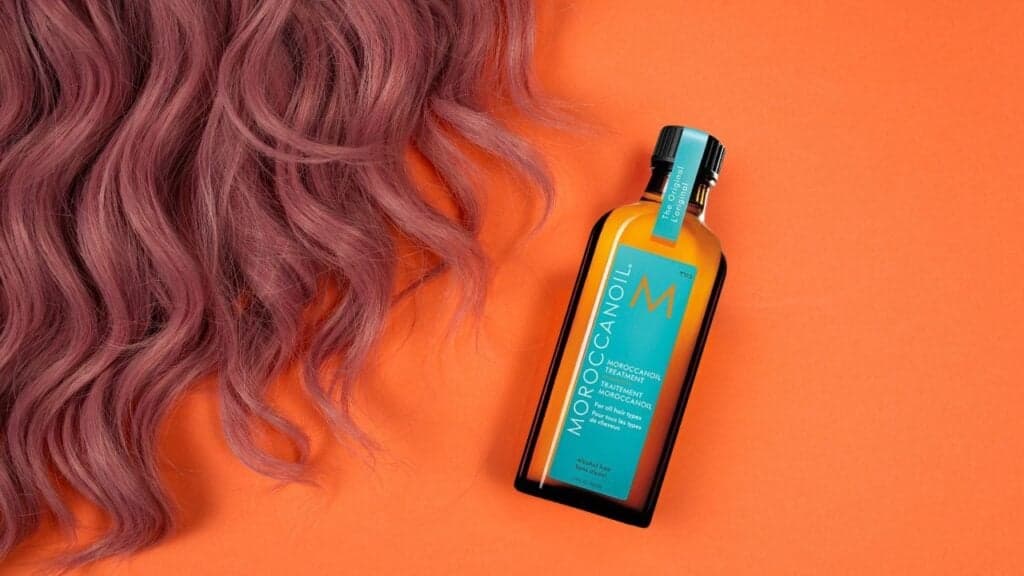Blog
Home / Perfume Stories / Eau de Parfum vs Eau de Toilette vs Eau de Cologne: Understanding Fragrance Concentrations
Categories
Recent Posts
- Does Sunscreen Prevent Tanning? Understanding Its Role & How to Tan Safely
- Clarins Total Eye Lift: How to Use It to Brighten & Firm Tired Eyes
- Best Facial Sunscreen for Oily, Sensitive, Dry & Combination Skin (2025 Guide)
- We Tested 3 Skin1004’s Madagascar Centella Sunscreens: Here’s Our Full Review
- 10 Best Pregnancy Safe Hair Dyes That Actually Work (2025 Guide)
Eau de Parfum vs Eau de Toilette vs Eau de Cologne: Understanding Fragrance Concentrations
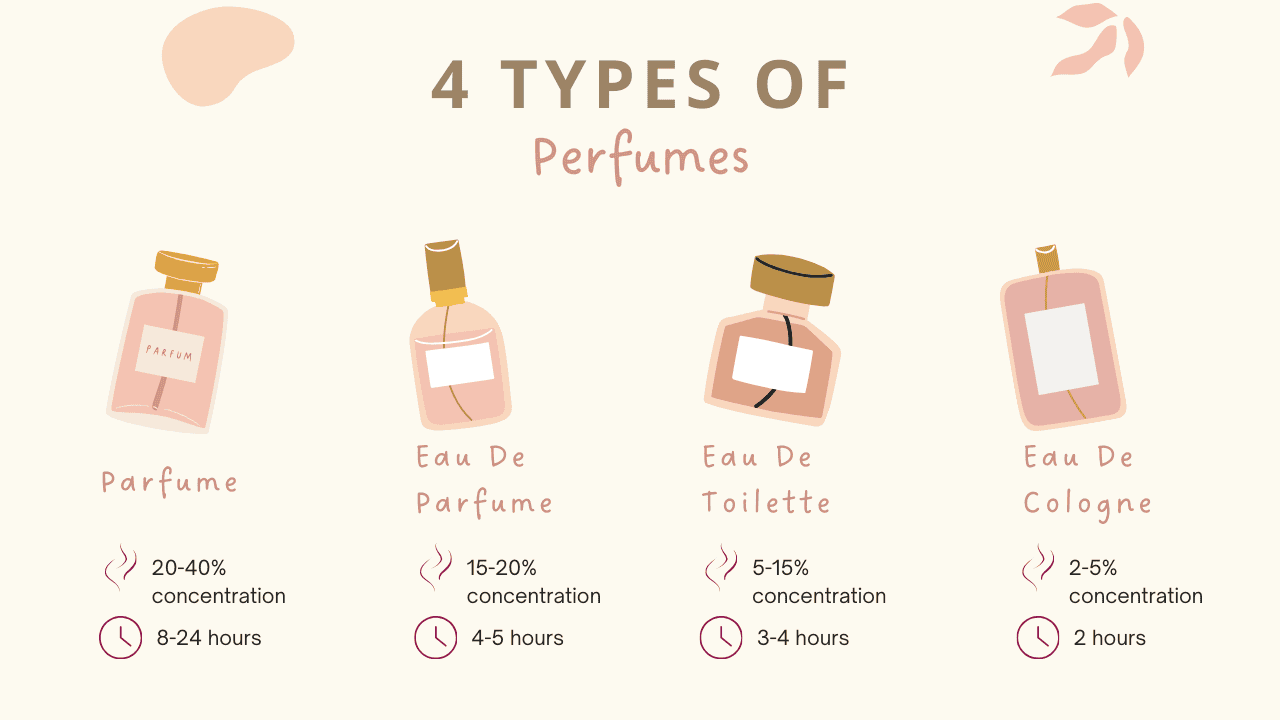
Walking into a fragrance store can feel overwhelming when you’re faced with bottles labeled Eau de Parfum, Eau de Toilette, and Eau de Cologne—all for the same scent but at wildly different prices. The secret lies in something called fragrance concentration, and understanding it can save you from expensive mistakes while helping you find scents that actually last on your skin.
The difference between these perfume concentrations isn’t just marketing speak. It fundamentally changes how a fragrance performs, how long it lasts, and even how the scent itself develops throughout the day. After years of testing fragrances across different concentrations, we’ve learned that choosing the right one matters just as much as choosing the right scent family.
What Fragrance Concentration Actually Means
Think of fragrance concentration as the perfume oil percentage in a bottle. Every perfume is made up of aromatic compounds (the actual scent molecules), alcohol, and water. The concentration tells you how much of those precious scent molecules are packed into each spray.
When a perfume has 20% concentration, that means 20% of the liquid is pure aromatic oils, while the remaining 80% is mostly alcohol with a bit of water. Higher concentrations mean more oils, which translates directly to stronger scents that last longer on your skin. But here’s what most people don’t realize: higher concentration also means the fragrance evolves differently throughout the day, often revealing base notes that lighter concentrations never quite reach.
The concentration affects three critical aspects of your fragrance experience. First, there’s longevity—how many hours the scent stays detectable on your skin. Then projection, which perfume enthusiasts call “sillage,” describing how far your scent travels from your body. Finally, the intensity and character of the scent itself changes with concentration, as perfumers often adjust formulas between EDT and EDP versions.
The Complete Breakdown: All Fragrance Types Explained
Understanding these numbers helps, but the real difference becomes clear when you actually wear these concentrations. The same fragrance in Parfum versus EDT can almost smell like different perfumes entirely.
| Aspect | Eau de Parfum | Eau de Toilette | Eau de Cologne |
|---|---|---|---|
| Concentration | 15-20% | 5-15% | 2-5% |
| Longevity | 4-6 hours | 2-4 hours | 1-2 hours |
| Projection | Moderate | Light-Moderate | Light |
| Price | High | Medium | Low |
| Best Season | Fall/Winter | All seasons | Spring/Summer |
| Occasion | Formal/Evening | Daily/Versatile | Casual/Fresh |
| Reapplication | Rarely needed | Once daily | 2-3 times daily |
1. Parfum (Extrait de Parfum): The Pinnacle of Luxury
Parfum represents the pinnacle of fragrance concentration, containing anywhere from 20% to 40% perfume oils. This is what perfumers originally envisioned when they created a scent—the truest, most concentrated expression of their artistic vision. When you apply genuine Parfum, you’re experiencing fragrance at its most refined and intimate.
What makes Parfum unique isn’t just the strength. The high concentration of oils allows for smoother, richer compositions where base notes can truly shine. I’ve noticed that Parfums tend to sit closer to the skin rather than projecting loudly into a room. Instead of announcing your entrance, a Parfum reveals itself gradually to people who come close to you, creating a sense of personal luxury rather than public statement.
The longevity of Parfum can be remarkable. A single application in the morning might still be detectable on your skin by bedtime, sometimes lasting well into the next day. This makes Parfum surprisingly economical despite the high upfront cost—you use far less product per wear than with lighter concentrations. One or two dabs on pulse points provides hours of scent, whereas you might go through a whole EDT bottle trying to maintain similar intensity.
Parfum works best in colder weather when lighter fragrances tend to fade quickly, and for evening occasions when you want sophistication without reapplication. The concentration also makes it ideal for those with sensitive skin, as the lower alcohol content is less drying than sprays with higher alcohol ratios.
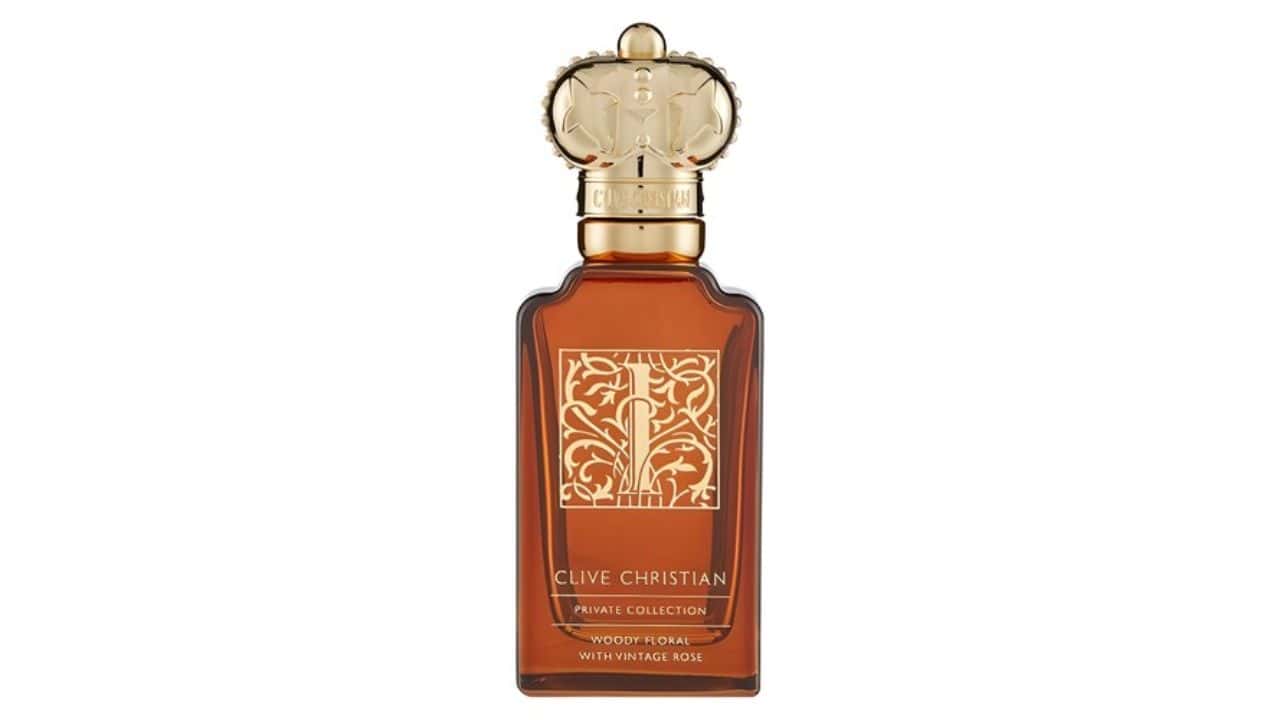
Characteristics:
- Longevity: 8–24 hours
- Projection: Intimate, close to the skin
- Best for: Special occasions, evening wear, colder climates
- Application: Just 1–2 drops on pulse points
- Price point: Premium/luxury tier
2. Eau de Parfum (EDP): The Luxurious Statement
Eau de Parfum has become the go-to concentration for fragrance lovers, and for good reason. With 15-20% perfume oil concentration, EDPs deliver excellent longevity without being overpowering, making them versatile enough for both professional environments and social occasions.
What I appreciate most about EDPs is how they allow the full fragrance pyramid to develop. You’ll notice the bright top notes when you first spray, experience the heart notes throughout your workday, and still detect those deeper base notes hours later. This complete evolution is what makes fragrance collecting so rewarding, and EDPs deliver it reliably.
The four to six hour longevity of most EDPs means you can apply in the morning and still smell good through lunch and afternoon meetings. For evening events, a quick reapplication refreshes the scent without building up to excessive intensity. This makes EDPs practical for people who can’t constantly reapply throughout the day but still want consistent performance.
Price-wise, EDPs represent a middle ground. They cost more than EDTs, but when you calculate cost per wear, they often work out similarly or even better since you need fewer sprays and reapply less frequently. Many niche and luxury houses also release their best work in EDP concentration, giving you access to complex, artisanal compositions that aren’t available in lighter forms.
One thing to keep in mind: EDPs work wonderfully in air-conditioned offices and temperate climates, but in extreme heat, they can become overwhelming. Save your richest EDPs for fall and winter, or opt for lighter formulations during summer months.
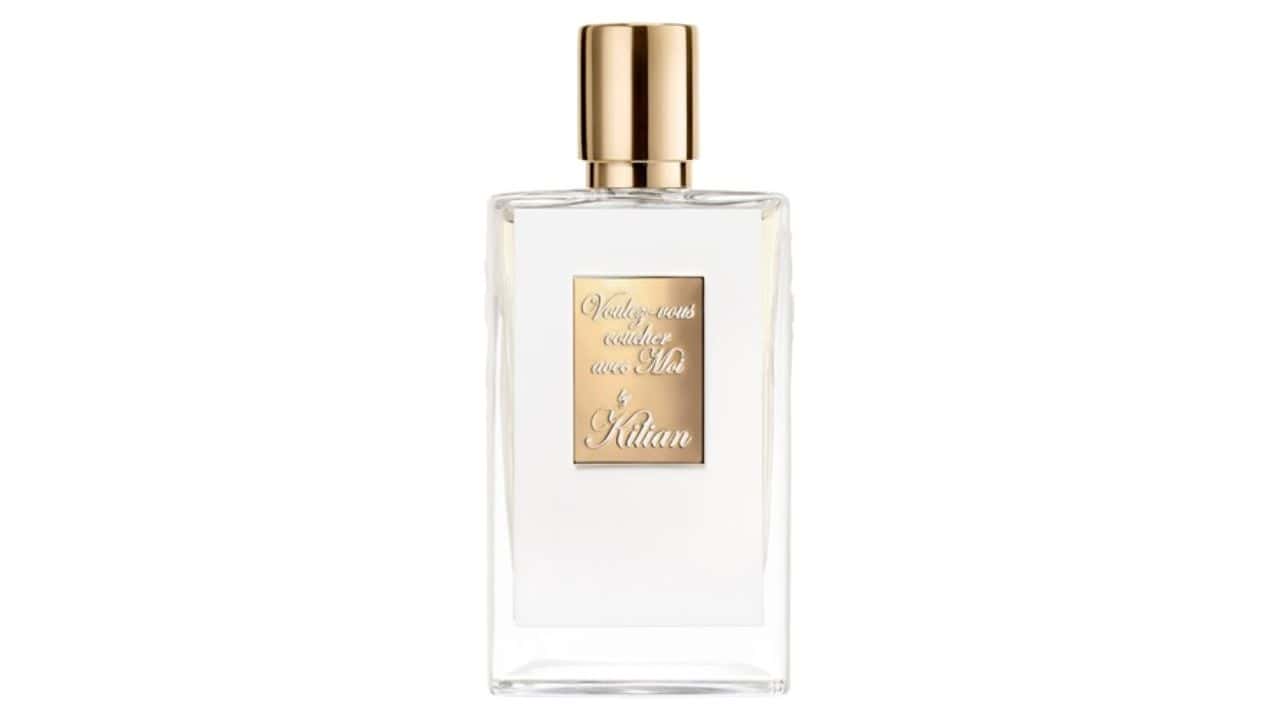
Characteristics:
- Longevity: 4-5 hours
- Projection: Moderate, noticeable but not overwhelming
- Best for: Daily wear, office environments, versatile occasions
- Application: 2-3 sprays sufficient
- Price point: Mid to high range
3. Eau de Toilette (EDT): The Everyday Essential
Eau de Toilette sits at 5-15% perfume oil concentration, making it the most common format you’ll encounter in department stores. The name comes from the French phrase “faire sa toilette,” referring to morning grooming rituals, which perfectly captures the fresh, uplifting character most EDTs possess.
EDTs offer a lighter fragrance experience that many people actually prefer for daily wear. The scent is present but not dominating, noticeable but not imposing. In professional settings where strong fragrances might be inappropriate, EDTs provide just enough presence to feel polished without crossing into “too much” territory. I’ve found them particularly useful for testing new fragrance families—the lighter concentration makes it easier to evaluate whether you truly like a scent without committing to an intense, day-long experience.
The two to four hour longevity means EDTs require midday reapplication, which some people view as a drawback. But there’s an upside: the ability to change your scent throughout the day. You might wear a fresh citrus EDT to the office, then switch to something warmer for an evening dinner. The lower price point makes this kind of variety more accessible than maintaining multiple EDP bottles.
EDTs excel in warm weather. When temperatures rise, heavy concentrations can become cloying and headache-inducing, but EDTs maintain a pleasant, breezy character that feels appropriate for summer activities. They’re also excellent for active lifestyles—gym bags, golf games, and outdoor adventures all benefit from fragrances you can spray liberally without guilt.
Many classic fragrances were originally formulated as EDTs, and some argue these lighter versions represent the perfumer’s original vision better than later EDP flankers. Acqua di Gio, Cool Water, and Dolce & Gabbana Light Blue all built their reputations as EDTs, proving that this concentration has serious appeal and longevity in the market.
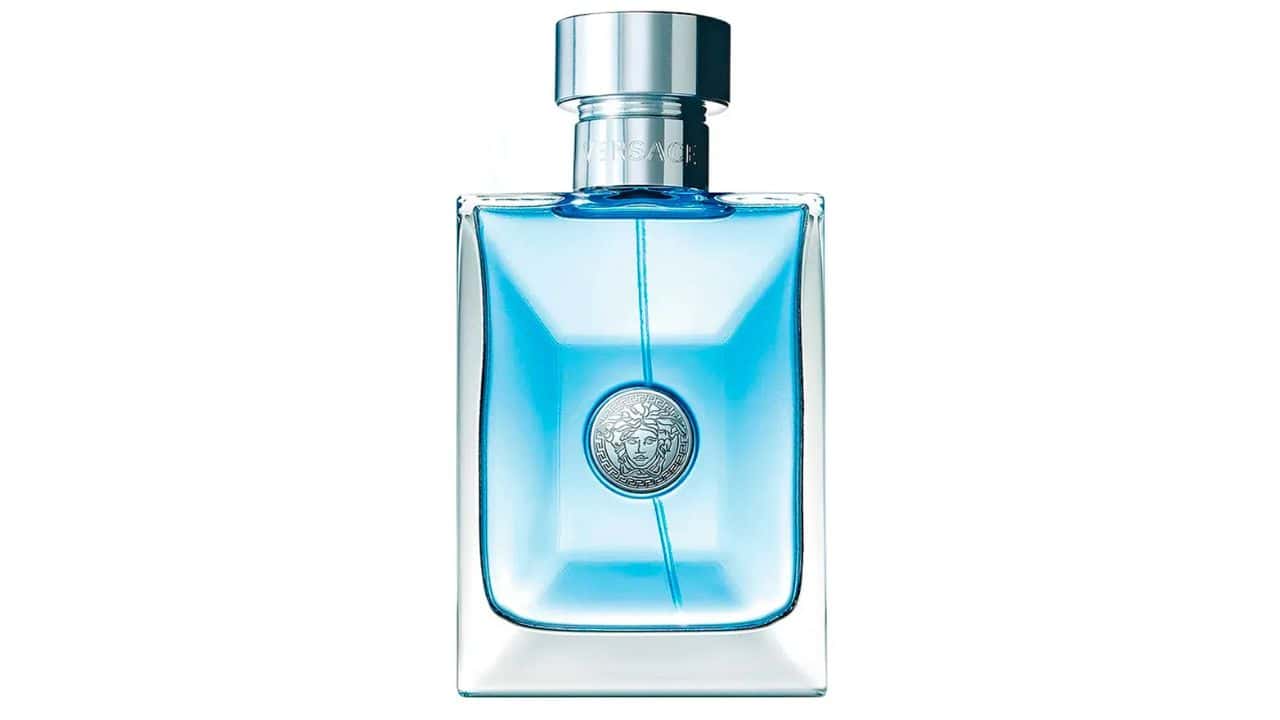
Characteristics:
- Longevity: 3-4 hours
- Projection: Light to moderate
- Best for: Daytime wear, warm weather, casual occasions
- Application: 3-4 sprays, can reapply as needed
- Price point: Moderate, good value for money
4. Eau de Cologne (EDC): The Fresh and Light Pioneer
Eau de Cologne contains just 2-5% perfume oil concentration, making it the lightest option in traditional fragrance categories. Despite the name, cologne isn’t specifically masculine—the term originated in Cologne, Germany, where these light, citrus-based fragrances were first created in the 18th century.
Traditional EDCs feature bright, refreshing notes like bergamot, lemon, neroli, and lavender. They’re designed to provide an immediate burst of cleanliness and energy rather than lasting complexity. With only one to two hours of wear time, EDCs are inherently ephemeral—fleeting moments of freshness rather than day-long companions.
This ephemeral quality actually has its advantages. EDCs are perfect for situations where you want fragrance without commitment: post-workout showers, midday refreshers, or layering under stronger concentrations. The low concentration and high alcohol content create a cooling sensation on skin, which feels particularly good in hot, humid conditions when anything heavier would feel suffocating.
The affordability of EDCs encourages experimentation. You can buy several different cologne styles—citrus, aromatic, aquatic—without a significant financial investment. This makes them ideal for people new to fragrance who want to explore different scent directions, or for minimalists who prefer owning versatile, single-note fragrances they can mix and match.
Some people dismiss EDCs as outdated or inferior, but traditional houses like 4711, Acqua di Parma, and Hermès maintain EDC offerings precisely because they serve a purpose that stronger concentrations cannot. There’s something beautifully simple about a well-made cologne—it doesn’t try to make a statement or last all day. It just provides a moment of pleasure and moves on.
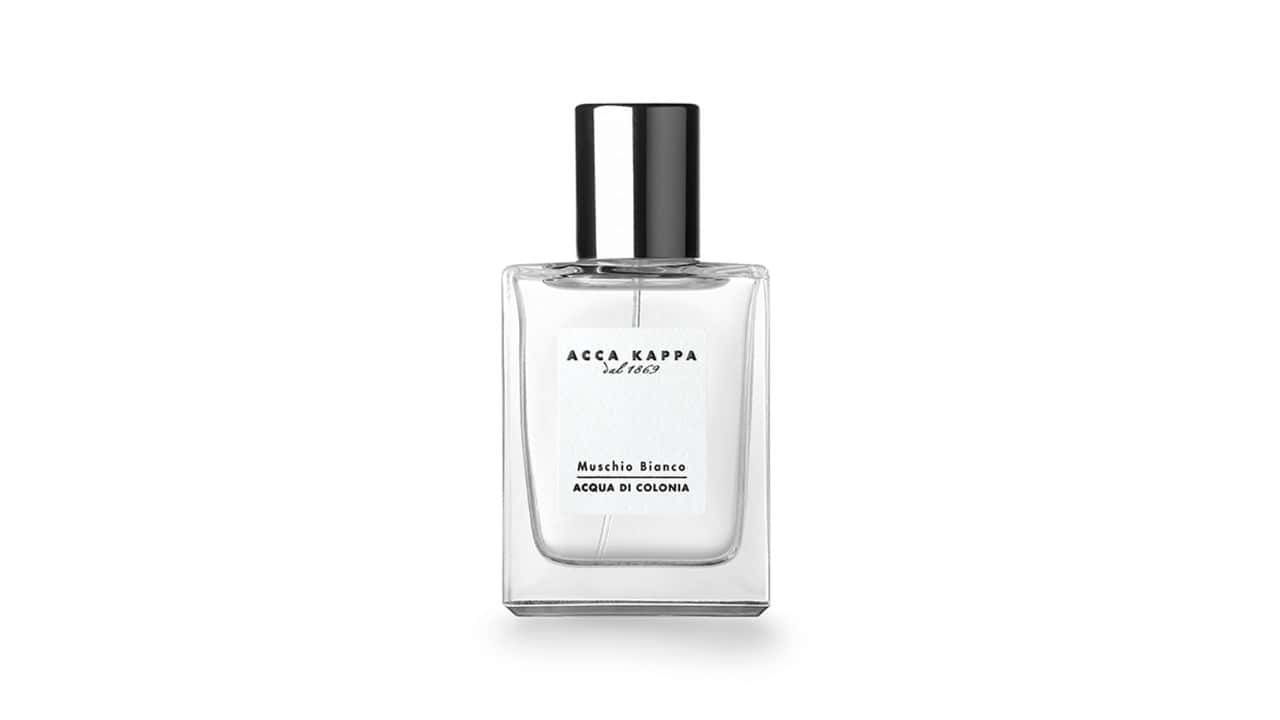
Characteristics:
- Longevity: 2 hours
- Projection: Very light, close to skin
- Best for: Hot weather, post-workout freshening, layering
- Application: Liberal application acceptable, frequent reapplication needed
- Price point: Most affordable option
How to Choose the Right Concentration for You
Selecting the ideal fragrance concentration isn’t about finding the “best” option—it’s about matching concentration to your specific circumstances, preferences, and budget. The concentration that works perfectly for someone else might be completely wrong for your lifestyle.
Consider Your Lifestyle
Your daily routine and social activities should be the primary drivers in selecting which fragrance concentrations will serve you best throughout the week.
- For Office Workers: EDT or light EDP works best in professional environments where you want to smell good without overwhelming colleagues in close quarters.
- For Social Butterflies: EDP provides the perfect balance of longevity and projection for social events, dates, and evening activities.
- For Active Individuals: EDT or EDC allows you to enjoy fragrance during workouts and outdoor activities without feeling overwhelmed.
- For Special Occasions: Parfum delivers maximum impact and sophistication for weddings, formal events, and romantic evenings.
Consider Your Climate
Environmental conditions play a crucial role in fragrance performance, making climate awareness essential for choosing concentrations that will thrive in your location.
- Hot and Humid Climates: Lighter concentrations (EDT, EDC) prevent fragrance from becoming cloying in heat and humidity.
- Cold and Dry Climates: Higher concentrations (EDP, Parfum) perform better as cold weather can diminish fragrance projection.
Consider Your Budget
Building a fragrance wardrobe doesn’t require breaking the bank when you understand how to balance concentration choices with your financial priorities.
- Maximum Value Strategy: Start with EDT versions of fragrances you love – they offer good performance at reasonable prices.
- Investment Strategy: Choose EDP or Parfum for your signature scents that you’ll wear regularly.
- Variety Strategy: Mix different concentrations to have options for various occasions and seasons.
Application Tips for Each Concentration
How you apply fragrance impacts performance just as much as which concentration you choose. The same EDP can last four hours on one person and eight on another simply due to application method.
Pulse points work because of body heat. These areas—wrists, neck, behind ears, inner elbows, behind knees—have blood vessels close to the skin’s surface, creating warmth that helps diffuse fragrance molecules into the air around you. But there’s nuance here. Applying to all pulse points simultaneously creates redundancy; you’re better off choosing two or three strategic locations rather than coating yourself everywhere.
For Parfum and EDP, less is genuinely more. Two or three sprays maximum will provide better results than five or six. Overapplication of concentrated fragrances creates a harsh, unbalanced scent where the top notes overwhelm everything else. The fragrance needs space to breathe and develop properly. I’ve learned to apply EDP, wait ten minutes, then evaluate whether I need more. Usually, I don’t.
EDT and EDC tolerate more generous application because of their lighter concentration. Four to six sprays of EDT is perfectly acceptable, and you can apply to hair, clothing, and skin without concern. These lighter concentrations also layer well with matching body products—using a scented body lotion or oil under your EDT extends longevity while adding depth.
Never rub your wrists together after applying fragrance. This common habit actually crushes scent molecules and disrupts the fragrance’s carefully designed evolution. Just spray or dab, then let it dry naturally. The heat from your skin will activate the scent without mechanical disruption.
Moisturized skin holds fragrance better than dry skin. Apply an unscented lotion or oil before your fragrance, or use a matching scented body product if available. The moisture creates a base that captures and holds scent molecules, significantly extending wear time across all concentrations.
Clothing can extend fragrance longevity, but use caution. Spray from six to eight inches away to avoid staining, and test on an inconspicuous area first. Natural fibers like cotton and wool hold scent better than synthetics. Keep in mind that fragrance on fabric doesn’t evolve the way it does on skin—you lose that personal, warming quality that makes fragrance feel intimate and unique to you.
Storing Fragrances to Maintain Quality
Even expensive Parfums lose their magic when stored improperly. Fragrance is chemically unstable, vulnerable to degradation from heat, light, and air exposure. Proper storage isn’t optional if you want your bottles to smell the same way months or years after purchase.
Heat is fragrance’s worst enemy. Never store perfume in bathrooms, despite how convenient it seems. The temperature fluctuations and humidity from showers accelerate deterioration. Window sills and dressers near radiators are equally problematic. Instead, store fragrances in bedroom closets, drawers, or cool, dark cabinets where temperature remains relatively constant. Some collectors use wine fridges for long-term storage of valuable or rarely-worn fragrances.ve the way it does on skin—you lose that personal, warming quality that makes fragrance feel intimate and unique to you.
Storing Fragrances to Maintain Quality
Even expensive Parfums lose their magic when stored improperly. Fragrance is chemically unstable, vulnerable to degradation from heat, light, and air exposure. Proper storage isn’t optional if you want your bottles to smell the same way months or years after purchase.
Heat is fragrance’s worst enemy. Never store perfume in bathrooms, despite how convenient it seems. The temperature fluctuations and humidity from showers accelerate deterioration. Window sills and dressers near radiators are equally problematic. Instead, store fragrances in bedroom closets, drawers, or cool, dark cabinets where temperature remains relatively constant. Some collectors use wine fridges for long-term storage of valuable or rarely-worn fragrances.
Light exposure, particularly UV light, breaks down fragrance molecules over time. This is why quality fragrances come in dark or opaque bottles—the glass itself provides protection. If you’ve removed the perfume from its original box for display purposes, you’re exposing it to unnecessary light damage. Keep boxes and store opened bottles inside them. Your collection might look less impressive on a vanity, but it’ll smell correct for far longer.
Air is the silent killer of fragrance. Every time you open a bottle, oxygen enters and begins oxidizing the fragrance compounds. This is unavoidable, but you can minimize it by keeping caps tightly secured and avoiding repeated opening just to smell the bottle. For very expensive or rare fragrances, consider decanting a small amount into a travel atomizer for daily use while keeping the main bottle sealed.
Fragrance doesn’t last forever. Even perfectly stored, most fragrances begin noticeably changing after three to five years. Higher concentrations with more oils (Parfum, EDP) generally last longer than lighter concentrations (EDT, EDC) because there’s less alcohol to evaporate. Signs of degradation include color darkening, scent turning sour or vinegary, and separation of liquid components. Once these appear, it’s time to let that bottle go.
If you’re a serious collector with bottles you won’t finish quickly, refrigeration actually works. Just allow the bottle to return to room temperature before applying—cold fragrance doesn’t project well. This technique is particularly useful for preserving vintage fragrances or discontinued scents you’re trying to make last as long as possible.
Common Misconceptions That Lead to Bad Purchases
The fragrance industry thrives on mystique, but that mystique has spawned numerous myths that lead to poor buying decisions. Let me clear up some persistent misconceptions based on actual fragrance chemistry and real-world testing.
The name “cologne” doesn’t indicate gender. Eau de Cologne is a concentration level, not a men’s fragrance category. The association between “cologne” and masculinity is pure marketing from the mid-20th century. Plenty of women wear EDC, and plenty of men wear EDP or Parfum. Any fragrance at any concentration can be worn by anyone. The only thing that matters is whether you enjoy how it smells on your skin.
EDT is not weaker than EDC, despite the confusing name. Eau de Toilette contains more perfume oil (5-15%) than Eau de Cologne (2-5%), making it objectively stronger and longer-lasting. The hierarchy from weakest to strongest is: EDC, EDT, EDP, Parfum. Don’t let the word “cologne” fool you into thinking it’s stronger than “toilette.”
Expensive doesn’t always mean longer-lasting or higher quality. Price reflects brand prestige, packaging, marketing costs, ingredient sourcing, and yes, sometimes concentration and quality. But a well-formulated EDT from a skilled perfumer can outperform a poorly made EDP from a luxury house coasting on name recognition. Concentration matters, but so does formulation skill. Some of the longest-lasting fragrances I own were relatively affordable EDPs from niche houses, while some expensive Parfums disappeared quickly.
You don’t need to match concentration to time of day. There’s no rule saying EDT is for daytime and EDP for evening. I wear Parfum to my office and EDT to formal dinners, depending entirely on the specific fragrance and weather. Choose concentration based on longevity needs, weather, and the fragrance’s character, not arbitrary social conventions about when different concentrations are “appropriate.”
The same fragrance name in different concentrations might smell meaningfully different. Perfumers often reformulate between EDT and EDP versions, adjusting the ratios of top, middle, and base notes to account for the different concentrations. Sometimes an EDT emphasizes fresh, bright notes while the EDP version of the “same” fragrance leans richer and warmer. Always sample both concentrations before assuming they’re identical except for longevity.
Finding Your Perfect Fragrance Match
Mastering fragrance concentrations isn’t just about smelling good—it’s transformative when you understand the science behind fragrance oils and discover the perfect concentration balance that works harmoniously with your skin chemistry, lifestyle, and personal style. The days of choosing between longevity and wearability, or between luxury and practicality, are over thanks to the diverse range of concentrations that allow you to curate a fragrance wardrobe that delivers both performance and pleasure.
Remember that finding your perfect fragrance concentration is a journey of careful exploration and experimentation. What works beautifully for one person’s skin chemistry and daily routine may need adjustment for another’s unique climate, sensitivity levels, and occasion requirements. Start with samples, build your collection gradually, and don’t be afraid to adjust your choices based on how different concentrations perform on your skin over time.
While understanding the principles of fragrance concentrations is essential, having access to authentic, high-quality fragrances ensures you can achieve the sophisticated, long-lasting results that make your scent selection truly transformative. With countless fragrance brands and concentration options available, finding trusted, effective perfumes that deliver both exceptional performance and beautiful scent development can feel overwhelming.
Discover your perfect fragrance collection at Beautinow – your trusted destination for authentic, professionally crafted fragrances that deliver luxury-quality results and help you master the art of scent selection that works beautifully with your unique style and fragrance goals.
Why choose Beautinow for your fragrance needs:
- Curated selection of authentic fragrances from trusted brands known for exceptional quality and artful concentration crafting
- High-performance fragrance options across all concentrations with proven longevity and sophisticated scent development
- Specialized collections for every occasion, from everyday EDT essentials to luxury parfum experiences
- Detailed concentration information and application guides for mastering fragrance selection and wearing techniques
- Expert fragrance advice and personalized recommendations based on your specific lifestyle, climate, and scent preferences
Your fragrance journey deserves the superior quality and expertly balanced concentrations that only come from professionally developed, master perfumer-crafted scents designed to perform beautifully while providing unforgettable olfactory experiences. Experience the difference that authentic, luxury-grade fragrances can make with Beautinow’s expertly curated collection of concentration essentials – including coveted favorites like Creed Aventus EDP, Tom Ford Oud Wood Parfum, and Chanel No. 5 Eau de Toilette for scents that transform your presence and confidence.
Frequently Asked Questions
Q: Can I layer different concentrations of the same fragrance together?
A: Absolutely! Layering different concentrations is an advanced technique that many fragrance enthusiasts use to create unique scent experiences and extend longevity. Try applying EDT as a base layer for freshness, then add EDP to pulse points for depth and staying power. You can also use EDC throughout the day for touch-ups over your EDP base. Start with light application and build gradually – the key is balance to avoid overwhelming yourself or others. This technique works especially well with linear fragrances that don’t change dramatically over time.
Q: Why does the same fragrance smell different in EDT versus EDP concentration?
A: Different concentrations can actually change how a fragrance smells, not just how long it lasts. Higher concentrations (EDP and Parfum) contain more fragrance oils, which allows perfumers to include more complex base notes and create richer, deeper scent profiles. EDT versions often emphasize top and middle notes more prominently since they need to make an immediate impact. Additionally, the higher alcohol content in EDT can make certain notes appear sharper or more volatile, while the lower alcohol in EDP allows for smoother, more rounded scent development. Your skin chemistry also interacts differently with various concentration levels, potentially highlighting different aspects of the same fragrance.
Q: Is it worth buying multiple concentrations of my signature scent?
A: For your true signature scent, owning multiple concentrations can be incredibly valuable and cost-effective in the long run. Consider getting EDP for special occasions and evening wear when you want maximum impact and longevity, EDT for daily office wear and casual daytime activities, and possibly EDC for summer months or gym bag touch-ups. This strategy gives you versatility while staying true to your signature scent family. Many fragrance lovers find that different concentrations suit different moods and occasions, making their beloved scent feel fresh and appropriate in any situation. Start with your most-used concentration, then add others based on gaps in your routine.
Related posts
Does Sunscreen Prevent Tanning? Understanding Its Role & How to Tan Safely
You’ve packed your beach bag, grabbed your favorite sunglasses, and slathered on that bottle of SPF everyone insists you need. But as you step into the glorious sun, a nagging question pops up: “If I’m wearing sunscreen, will I still tan? Or am I just wasting my time trying to get a golden glow?“ It’s…
Clarins Total Eye Lift: How to Use It to Brighten & Firm Tired Eyes
Ever glance in the mirror at 7 a.m. and think, “Did I sleep at all?” We’ve all been there—those mornings where our eyes spill our secrets before we can reach for concealer. If your under-eye area looks more “red-eye flight” than “rested glow,” there’s hope. And not just any hope—Clarins Total Eye Lift is that…
Best Facial Sunscreen for Oily, Sensitive, Dry & Combination Skin (2025 Guide)
Finding the best facial sunscreen for your specific skin type is like searching for the perfect pair of jeans—one size definitely doesn't fit all. Whether you have oily, sensitive, dry, or combination skin, the right sunscreen for face can make a world of difference in how your skin looks and feels throughout the day while protecting against harmful UV damage, premature aging, and skin cancer.
We Tested 3 Skin1004’s Madagascar Centella Sunscreens: Here’s Our Full Review
When it comes to sunscreens, the struggle is real—white casts, greasy finishes, irritation, and worst of all, formulas that just don’t do their job! But we’re here to help. We tested three of Skin1004’s best-selling Madagascar Centella sunscreens to find out which one truly deserves a spot in your skincare routine. Whether you prefer a…
10 Best Pregnancy Safe Hair Dyes That Actually Work (2025 Guide)
If you’ve ever stared into the mirror, roots creeping in, and thought, “Is it okay to do this while I’m pregnant?”—you’re not alone. It’s a question almost every beauty-loving mom-to-be asks herself. The short answer? Yes, you can dye your hair while pregnant… but (and it’s a big but) there are a few things you…
Can You Wear Sunscreen on a Sunbed? The Truth You Need to Know
Picture this: You’re about to step into a tanning bed, anticipating that perfect, golden glow. But then a thought crosses your mind: should you use sunscreen? After all, sunscreen is specifically designed to protect your skin from harmful UV rays, right? So, does it logically make sense to apply it while intentionally exposing yourself to…
10 Best Face Cleansers for Oily Skin in 2025: Expert Reviews & Buying Guide
With countless products claiming to be the best cleanser for oily skin, choosing the right one can feel overwhelming. Some cleansers are too harsh and trigger even more oil production, while others are too gentle to effectively manage excess sebum. This comprehensive guide features the 10 best face cleansers for oily skin that dermatologists recommend and real users love, plus expert advice on how to choose a cleanser for oily skin that works specifically for your needs.
Skincare Ingredients To Avoid During Pregnancy and Safe Alternatives
Let’s be honest—pregnancy changes everything. Your cravings, your sleep schedule, and yes, even your skin. Some moms-to-be glow like a filtered selfie, while others are battling breakouts, dryness, or pigmentation that seems to pop up overnight. And just when you think you’ve found a miracle serum? You flip the bottle and spot the words retinol…
How to Use Hair Oil for Soft, Shiny, and Healthy Hair: Tailored Tips for Every Hair Type
You know that moment when you run your fingers through your hair and it actually feels like silk? Yep, hair oil can do that. We’ve come a long way from those days when oiling hair felt like a messy chore only your grandma insisted on. Turns out—grandma was onto something. Hair oil is the unsung…
How to Get Rid of Oily Skin: Top Tips and Products
Tired of that mid-day shine takeover? If your skin constantly feels greasy or your makeup slides off by lunch, you’re likely dealing with oily skin. But don’t worry—it’s totally manageable. This guide breaks down exactly how to get rid of oily skin with smart skincare tips, proven ingredients, and products that actually work. Whether your…
10 Best Toners for Oily Skin That Won’t Strip or Sting
Oily skin has its perks (hello, slower aging), but it also needs a little extra strategy—and the right toner can make all the differenc...
Moroccanoil Beauty Routine: How To Use It For Salon Worthy Results?
Nothing beats that fresh-out-of-the-salon feeling. The soft, silky strands, the insane shine, the confidence boost… it’s pure magic. But what if you could get those same salon-worthy results without stepping foot in a salon? You can completely transform your hair from dry, damaged, and dull to sleek, shiny, and healthy—all from the comfort of home….
Comments



